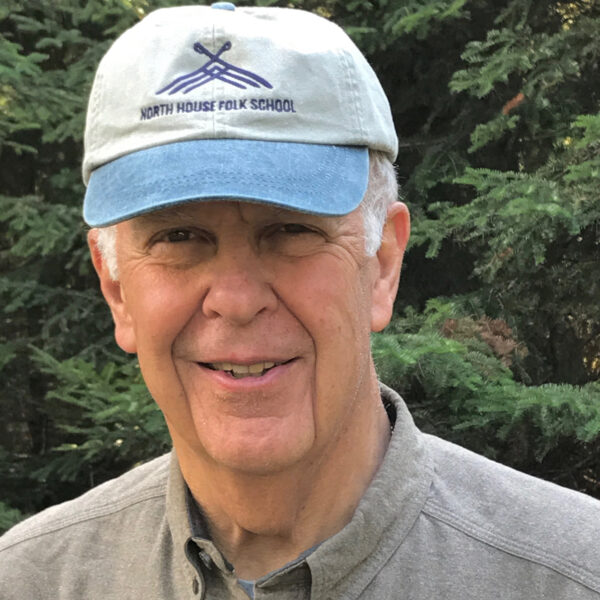
Teamwork and team spirit - Hands piled on top of one another . Image by 드림포유/Flickr, Attribution-NoDerivs.
Laughter & Silence: The Spiritual Odd Couple
Laughter and silence are among our most reliable guides on this magical mystery tour called life.
On the surface, the two may seem to have little in common, but their kinship is soul-deep. Both make us vulnerable by penetrating our illusions and taking us closer to reality, grounding, renewing and redeeming us as they do.
Silence deprives us of distractions, forcing us to face the gnarly emotions that can arise when we stop yammering for a while. Laughter often reflects our foibles and flaws, holding up a mirror to how ridiculous we can be. We have a name for people who trust each other enough to risk the vulnerability that comes with sharing silence and laughter. We call them soul friends.
I grew up in a family who laughed a lot, as we do to this day. But my parents made sure that my sisters and I knew the difference between laughing at people (a bad thing) and laughing with people (a good thing). That distinction came back to me when I learned that “compassion” means “to feel with.” Compassionate laughter often emerges as we explore the way the comic and the tragic are interwoven in the fabric of our lives.
I once led a retreat that took many participants to vulnerable inward places. During our closing circle, one of them reminded us that we’d soon be back home where people would ask, “So, what happened at the retreat?” He said he’d found it difficult to share his inner journey with others, and mentioned a couple he knew whose relationship was threatened when one partner went down a path the other did not understand. Many nodded in agreement as he spoke, and the mood began to turn a tad grim.
Then someone brought out a little red-jacketed book, saying he had found it full of good counsel. The title was Zen Judaism: For You, A Little Enlightenment, which itself drew a chuckle. But that was nothing compared to the laughter that followed his reading of a “teaching”:
“If you practice Zen meditation for long periods of time, you may be criticized by friends and relatives who feel you are shutting them out. Ignore these people.”
Our laughter did not mock our friends, families, or the man who had worried aloud, who laughed long and hard. We were not laughing at anyone — we were laughing with each other about our shared dilemma. Our laughter helped us hold it more lightly, increasing the odds that we would deal with it more lovingly. Later I learned that when people went home and were asked the Big Question, many told this story, defusing the issue, demystifying the retreat, and opening the way into dialogue.

Laughter can also bring us closer to the sacred. I’ve seen it happen time and again at family dinner tables when young children are present. We’re invited to bow our heads and close our eyes for a moment of silent thanksgiving. The adults comply, but some of the children can’t resist peeking. The moment their eyes meet, a chain-reaction begins: the stifled snorts, the muffled guffaws, the uncontrollable giggling. The laughter of children always strikes me as a form of prayer, easily as valid as any other, a celebration of the sacredness of life in which children so unselfconsciously dwell. Spiritual gravitas unleavened by humor makes bread that gives the soul a bellyache.
My parents’ admonition about the two kinds of laughter has parallels when it comes to silence. We can be silent at people, as when we give someone “the silent treatment” to convey our disdain, or keep a cowardly silence in the face of great wrongs. Silences of this sort destroy community, and may make us co-conspirators with injustice or flat-out evil. Or we can be silent with people, as in the kind of silence that surrounds reflection and reverence. Silences of this sort are a form of human communion that allow us to connect with each other at depths we can’t reach with words.
For 11 years, I lived and worked in a Quaker living-learning community of 70 people called Pendle Hill, where our lives were so closely entwined that people could easily draw close to each other — and just as easily become alienated. But “alienated” is a mild word to describe my feelings toward one woman there. I thought of her as the Devil’s Spawn, dispatched directly from the Hellfires of Hades to destroy all that is green and good about life on Earth.
At Pendle Hill, residents gather every morning in a Quaker meeting for worship, 45 minutes of communal silence broken only occasionally by words spoken from the heart. One morning, I arrived late, and the only seat available was — yes — on a bench next to her. I came close to leaving. But somehow I managed to sit down, close my eyes, let my inner turmoil settle, and slowly forget that next to me was an agent from the Dark Side.
Half an hour later, head still bowed, I opened my eyes and found myself looking directly at this woman’s upturned hand as it rested on her knee. There, spotlighted by a shaft of sunlight, I saw the faint but steady throb of an artery in her wrist, the elemental beat of her very human heart. In that silent, sunlit moment I knew beyond words that here was a person just like me, with strengths and weaknesses, hopes and disappointments, joys and despairs.
In an instant, she was humanized for me. I never became close to her, and I never stopped feeling a bit wary. But I could no longer demonize her as I had before. This revelation of her humanity, this reframing of our relationship, would not have happened had she and I tried to “talk things out.”

Years later, I heard a story from my friend Rachel Remen, a physician of body and soul, that reveals the power of silence to honor our shared humanity in the face of genuine evil—a story she retells in her book, My Grandfather’s Blessings. One of Rachel’s colleagues attended a conference on Jungian dream analysis. At a special session, participants were asked to take a card and write about a dream. The cards were then handed on to a panel of analysts, among whom was the grandson of Carl Jung:
“One of these cards told the story of a horrific recurring dream, in which the dreamer was stripped of all human dignity and worth through Nazi atrocities. A member of the panel read the dream out loud. As she listened, my colleague began to formulate a dream interpretation in her head, in anticipation of the panel’s response. It was really a ‘no-brainer,’ she thought, as her mind busily offered her symbolic explanations for the torture and atrocities described in the dream.
But this was not how the panel responded at all. When the reading of the dream was complete, Jung’s grandson looked out over the large audience. ‘Would you all please rise?’ he asked. ‘We will stand together in a moment of silence in response to this dream.’ The audience stood for a minute, my colleague impatiently waiting for the discussion she was certain would follow. But when they sat again, the panel went on to the next question.
My colleague simply did not understand this at all, and a few days later she asked one of her teachers, himself a Jungian analyst, about it. ‘Ah, Lois,’ he had said, ‘there is in life a suffering so unspeakable, a vulnerability so extreme that it goes far beyond words, beyond explanations and even beyond healing. In the face of such suffering all we can do is bear witness so no one need suffer alone.'”
In silence, there is a depth of communion that trumps what we can achieve with words. In laughter, there is a depth of communion that trumps what we can achieve with solemnity. If personal and communal wholeness is what we seek — a wholeness that embraces the tragic and the comic, the darkness and the light — the odd couple of laughter and silence can help take us there.
This essay was adapted from my book, A Hidden Wholeness.

Share your reflection